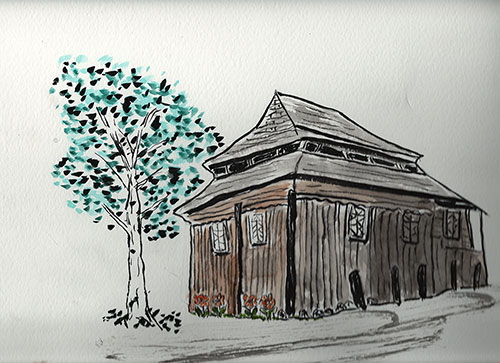Lost Treasures: The Wooden Synagogues of Eastern Europe The Artwork of Bill Farran
Horodok, Ukraine - Sumi-e Style Brush Painting
Horodok, Ukraine - Sumi-e Style Brush Painting
Yiddish: Grayding
Horodok was first mentioned in historical documents in the year 1392. Jews were invited to settle in Horodok by the noble family who owned the town during the 1500’s. The Jewish community grew and prospered in the late 1640's and early 1650’s.
During the Khmelnitsky massacres the town was devastated and the Jewish community was gravely affected by Cossack raids. In 1653 Bogdan Khmelnitsky’s army of 30,000 men besieged the town. Poles, Ukrainian Uniates (a church adhering to Eastern rites but submitting to Papal authority) and Jews hid behind the walls of Horodok Castle. Cossacks took the castle by storm, destroyed it, and massacred everybody. As recorded by one of Bogdan Khmelnitsky contemporaries, "... they spared neither nobility nor riffraff." After the Khmelnitsky Rebellion the Jews recovered and were once again prosperous.
The great wooden synagogue was built during a period of peace and prosperity. Until the Partition of Poland, Horodok was part of the Commonwealth of Poland and Lithuania. After the Partition of Poland, Horodok was located within the Russian Empire. After World War I Horodok became part of Poland. The Jewish presence in Horodok was ended by the Nazis in World War II.Purchase a print
Sumi-e Style Brush Prints are 8x10 inches, in an 11x14 matte.
